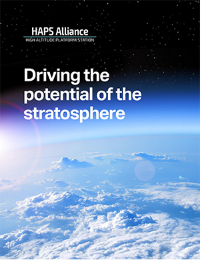TOPICS
Today’s Challenge
Will Be Tomorrow’s
Normal
With its leading technology, SoftBank will establish new infrastructure to create a society where people and things are connected around the world.
HAPS will lead
the Information Revolution
We will continue to pioneer the future and
provide reliable connectivity.

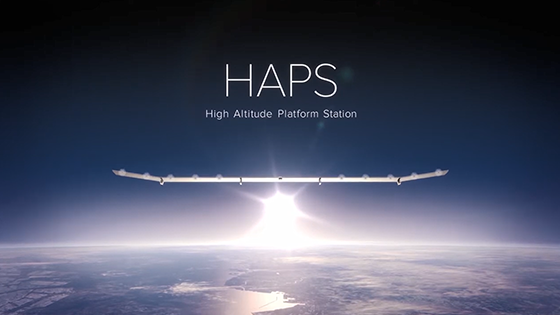

HAPS Concept Movie

HAPS (High Altitude Platform Station) is a telecommunication platform located in the stratosphere.
HAPS is a base station in the sky.
Weather in the stratosphere is mild throughout the year with little change in wind speeds.
This allows HAPS systems to fly with stability.
HAPS systems can provide low-latency communications since they are much closer to the earth compared to GEO and LEO satellites.
With the aim of constructing a HAPS system for a global business, SoftBank started working on an unmanned aircraft system design for HAPS from April 2017, and established HAPSMobile Inc.*1 in the same year of December.
After a short span of approximately three years since development began, in September 2020 the system reached the stratosphere during a test flight.
In addition to achieving stratospheric flight, an Internet connectivity test using a communications payload was successfully performed during the same test flight.
Wide Area Coverage
SoftBank's unmanned aircraft system for HAPS is large and can carry high-performance and large payloads.
A single aircraft can cover a communication area of 200 km in diameter, and it can be used in areas where communication networks are not available, such as the sky, remote islands, mountainous areas, and in developing countries, which are difficult to cover with ground base stations. Our HAPS systems will be able to build stable Internet connection environments in these regions.
HAPS and terrestrial base stations can use the same frequencies. For this reason, existing smartphones and IoT devices will work with a HAPS network.
HAPS networks can overlay ground-based mobile network communication areas.
So it can be used for the expansion of terrestrial mobile networks or for backup applications. They can even support the migration from 3G to LTE or 5G easily and at a reasonable cost.


Use Cases


HAPS uses the same frequencies as those of base stations on the ground, so current smartphones can be used without any upgrade. No special device is needed to use maps and share photos while mountain climbing or enjoying outdoor events in rural areas.


A completely different world that creates new possibilities and new value is about to come thanks to devices and sensors that are all connected to the Internet. SoftBank will support IoT telecom standards to accommodate various IoT solutions.
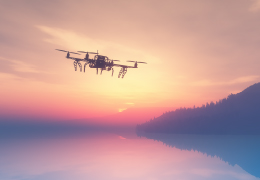

Drones are not just for taking photos and videos from the sky. Many other drone services are about to begin, including delivery services and construction site maintenance and inspections.. SoftBank can provide stable network connectivity from the ground up to the sky, supporting future drone businesses.
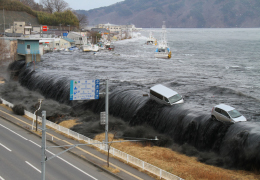

Telecommunications infrastructure serves as a critical lifeline in the event of disasters. With HAPS, we can continue to provide reliable network connectivity, even if base stations on the ground are taken down by massive earthquakes, storms or tsunamis.
(Iwate Disater Tsunami / Provided by Miyako City)
Specifications of the Aircraft
“Sunglider,” a solar-powered unmanned aircraft system, is used for HAPS.
A stratospheric test flight on September 21, 2020 was successfully completed. Sunglider reached an altitude of 62,500 feet (approximately 19 kilometers) and stayed aloft for 5 hours and 38 minutes in the stratosphere.
It also marked the world’s first successful delivery of LTE connectivity from a fixed-wing HAPS autonomous aircraft in the stratosphere.
- Name
- Sunglider
- Wingspan
- 78 meters
- Cruise Speed
- 110 km/h
- Flight Duration
- Several months
- Battery
- High energy density Lithium ion
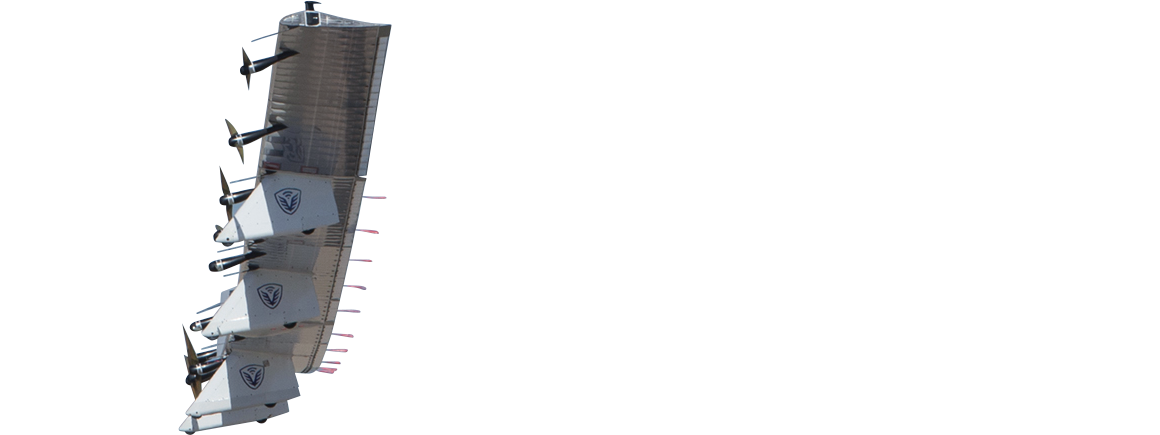

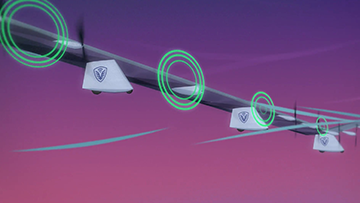

Aircraft Movie
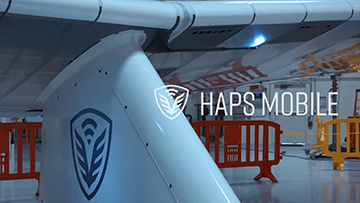

Real Aircraft
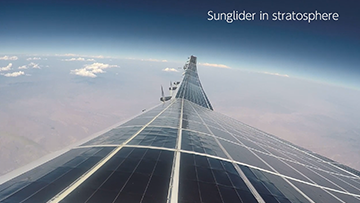

Sunglider's Test Flight
in the Stratosphere
Core foundational technologies of HAPS
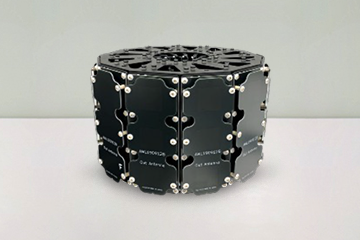

Since the aircraft circulates in the stratosphere, the payload supports all movements of the aircraft and enables stable communication quality by fixing the communication area from the stratosphere. In addition, interference avoidance technology makes it possible to use the same radio waves as those on the ground. Along with the expansion of the communication area, it will be possible to increase communication capacity.
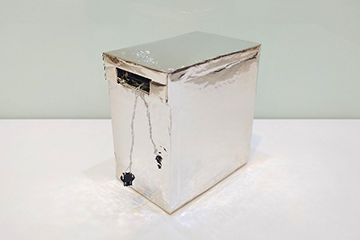

We are developing next-generation batteries that are safe, lightweight, and have high weight energy density, which will be the power source of the HAPS aircraft even in the stratosphere’s harsh environment with ultra-low temperatures at around minus 70 degrees.
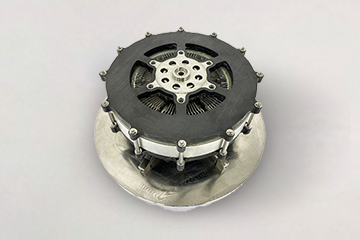

Motor for HAPS achieves light weight, high efficiency, and high reliability that enables long-time flight of the aircraft with only solar power generation, and stable performance and high thermal dissipation even in the low-pressure environment of the stratosphere.
SoftBank, along with other leading companies in the telecommunications, technology and aviation industries, are united in their goal to foster a HAPS ecosystem.


Unify voices within
the HAPS industry
- Enhance the importance and understanding of HAPS through activities that raise awareness.
- Align the voices of HAPS industry leaders into a unified message for partners, regulators, and the public.
Cross-industry
collaboration
- Foster a HAPS ecosystem by collaborating with other industries.
Promote safety standards
and help build regulatory
frameworks
- In cooperation with the aviation regulators, advance the regulation and standardization of operations in upper air spaces, including the stratosphere.
- Advocate for international standardization of frequencies used for HAPS and emerging commercial standards.
Accelerate HAPS
technologies and
commercial adoption
- Hasten the development and adoption of HAPS technology through industry-wide standards, interoperability guidelines, and regulatory policies.
Publications
Please include your name, company name, and inquiry details in your email.


NTN provides communication networks from outer space and the stratosphere. SoftBank will develop NTN solutions with three communication services: OneWeb, Starlink Business and HAPS.

